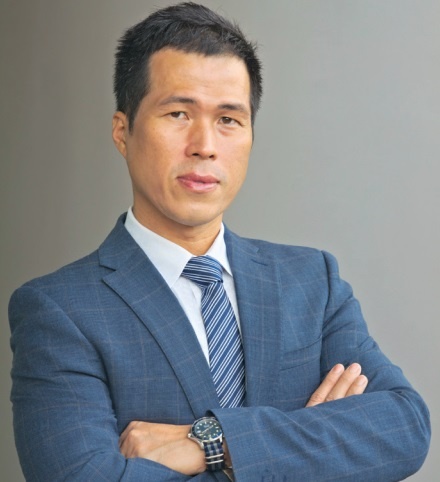Ho Chi Minh City: a rising hub for high-tech manufacturing
According to Fortune Business Insights, the semiconductor market size was valued at more than $573 billion in 2022 and grew to $1.38 trillion in 2029, exhibiting a compound annual growth rate of 12.2 per cent. Leading markets in terms of chip sales are the US, Taiwan, South Korea, Japan, and China.
 |
| Truong Bui, managing director, Roland Berger Vietnam |
Vietnam’s chip market reached $563 million in 2023 and is set to increase annually at 10.1 per cent to reach $754 million in 2026. In 2023, Vietnam’s chip sector accounted for less than 0.1 per cent of the global value.
To move up the value chain to cover activities such as chip manufacturing and high-end design, significant funding into upskilling human resources, improving underlying infrastructure, government incentives and tax breaks, are needed to make the country an alternative to established manufacturers such as South Korea or China.
Vietnam should maintain its current progress and continue to grow in electronics manufacturing services. In the longer term, Vietnam could move upstream to conventional back-end and advanced back-end production to draw in outsourced semi-assembly and testers, as well as integrated device manufacturers. Yet, the upstream movement is not without its challenges, especially given the shortage of engineers.
Ho Chi Minh City currently stands as the most promising candidate to pioneer Vietnam’s chip sector, given its profile as the country’s leading economic city.
In an ambitious move last year, Vietnam set its sights on transforming Ho Chi Minh City into a central figure in the Southern Key Economic Region. The resolution focused on attracting investment in high-tech industries, particularly semiconductors and chips, and is poised to redefine the city’s economic landscape.
Roland Berger has been engaged in multiple public and social-economic planning projects in Vietnam, which includes the master planning for the industrial sector of Ho Chi Minh City towards 2030.
During our in-depth analysis as we prepare for the city master planning, we noticed that Ho Chi Minh City currently lacks the required ecosystem for innovative and research and development (R&D) centres, which are stepping stones to building up a regional tech hub.
However, the current geopolitical shift of chip manufacturing to Vietnam represents immense potential for the country in general and especially for Ho Chi Minh City. It is a strategic geographic location, blessed by an upcoming international airport and an integrated connectivity hub for trade (Cat Lai Port), a burgeoning economy, and a young skilled workforce.
High-tech industries such as semiconductors and chips require specialised skills that are currently scarce in the Vietnamese labour market, which include semiconductor hardware engineers, software engineers, quality control specialists, R&D scientists, and manufacturing technicians.
The 100-million-people country has only 5,000-6,000 trained hardware engineers in the chip sector, against expected demand of 20,000 in five years and 50,000 in a decade. There’s also an inadequate supply of trained chips software engineers.
While Ho Chi Minh City has made significant strides in infrastructure, there’s still a need for more specialised facilities that cater to high-tech industries. This includes advanced manufacturing plants, research labs, and reliable power and data networks. Upgrading infrastructure to meet the specific demands of high-tech industries is crucial.
Additionally, waste management is another key area for improvement. Managing the environmental impact of chip manufacturing, including the handling of chemicals and waste, requires advanced systems that are currently underdeveloped in Ho Chi Minh City. Despite these challenges, opportunities abound. The global shift towards diversifying semiconductor and chip manufacturing offers a golden opportunity for Vietnam.
The city can leverage its low labour costs versus other emerging semiconductor hubs (such as Bangkok) and increasingly open economic policies to draw in investment. The growing trend of tech giants looking to mitigate geopolitical risks by diversifying their manufacturing bases further plays into Ho Chi Minh City’s favour.
Importantly, Vietnam has abundant natural resources and raw materials, such as silica sand and an abundance of rare earths used for chip production (the second-largest reserve in the world after China). This provides a unique advantage for Ho Chi Minh City to develop a more integrated supply chain moving into the future.
To transform these opportunities into reality, a multi-faceted approach is needed. Ensuring required infrastructure and attractive policies are in place. Policymakers must prioritise the development of specialised economic zones with incentives for high-tech industries. These zones should offer benefits like tax breaks, streamlined regulatory processes. In this matter, Vietnam in general and Ho Chi Minh City in particular have performed well.
Collaborations with universities and global tech firms to develop specialised courses in semiconductor and chip manufacturing can address the talent gap.
Ho Chi Minh City could implement specialised programmes in universities to focus on semiconductor technology, microelectronics, and related fields. The city could also upgrade vocational training centres.
To draw in foreign talent, the Vietnamese government should equally work on devising special work permits and extending visa tenure for chip engineers and facilitate their relocation to Vietnam. Though the numbers of foreign engineers cannot fulfill the country’s current human talent gap, the expertise and experiences they bring in are of tremendous value to the local chip sector.
Ho Chi Minh City stands at the threshold of a transformative era. By addressing its challenges and harnessing its opportunities with strategic measures, the city can become a magnet for domestic and foreign investment in the high-tech sector.
| Vietnam wants to cooperate with Samsung in semiconductor development: official Vietnam hopes Samsung become a strategic investor in the context that the country is building a strategy to develop the semiconductor industry and promote innovation, Deputy Minister of Planning and Investment Nguyen Thi Bich Ngoc has told General Director of Samsung Vietnam Choi Joo Ho. |
 | US businesses focused on semiconductors, clean energy, carbon reduction Under Secretary of State for Economic Growth, Energy, and the Environment Jose Fernandez shared the direction of cooperation with Vietnam in the fields of semiconductor chips, clean energy and carbon reduction at a meeting with members of the American Chamber of Commerce in Ho Chi Minh City on January 24. |
| Vietnam aims to make its mark on the semiconductor industry Professor Nguyen Dinh Duc, Vietnam's pre-eminent scientist and the only one recognised among the world's top 100 influential figures in engineering and technology, spoke with VIR's Manh Bon about how semiconductor manufacturing represents a pivotal opportunity for Vietnam. |
| Vietnam’s semiconductor challenge and the potential bonanzas within Amid the current restructuring of supply chains, perhaps no industry more so than the semiconductor industry exemplifies the lucrative opportunities and the complex dynamic between security and business. Having benefited to become a key element in supply chains across a number of industries, Vietnam has announced ambitious plans to do the same in the semiconductor industry. |
What the stars mean:
★ Poor ★ ★ Promising ★★★ Good ★★★★ Very good ★★★★★ Exceptional
Related Contents
Latest News
More News
- Opportunities reshaped by disciplined capital aspects (December 08, 2025 | 10:05)
- Fresh M&A cycle ahead as reforms begin to take effect (December 08, 2025 | 08:00)
- What foreign investors need to know to unlock new deals (December 08, 2025 | 08:00)
- Telecoms advances expected to penetrate all sectors and fields (December 03, 2025 | 13:00)
- Main drivers for Vietnam’s digital economy future (December 03, 2025 | 11:35)
- Pivotal stage of growth paves way for rise in M&As (December 03, 2025 | 10:00)
- Positive projections for M&A interest from Thailand (December 03, 2025 | 09:40)
- Manifesting the first line of defence in cybersecurity (December 03, 2025 | 09:00)
- The transformational role AI can play in accounting arena (December 03, 2025 | 08:00)
- Unlocking 5G-AI potential in Singapore (December 03, 2025 | 08:00)

 Tag:
Tag:


















 Mobile Version
Mobile Version